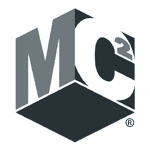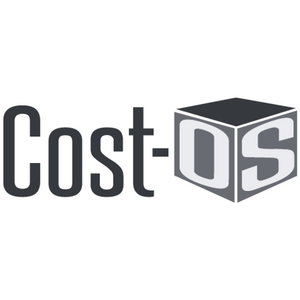How to Do More with Less in Preconstruction

The construction industry faces significant challenges due to ongoing labor shortages and resource constraints, a long-term trend. According to the Associated Builders and Contractors (ABC), 439,000 net new workers will be needed in 2025 to meet the projected demand in the industry.
This shortage is particularly severe in preconstruction, with 78% of contractors noting challenges in filling estimating positions, according to the Associated General Contractors of America (AGC) 2024 Workforce Survey. This labor shortage can lead to gaps in expertise, resource limitations, delays in decision-making, scheduling issues, and communication obstacles.
Stewart Carroll, chief customer officer at Beck Technology, shares, “It’s hard to find talent to fill jobs across companies. There aren’t enough people coming into the industry. A few years ago, companies were looking to do more with the people they employed. Now they’re looking for ways to do more with fewer people.”
Labor shortages remain a pressing issue, compounded by rising interest rates, rapid advancements in construction technology, and the unpredictable dynamics of the economy and political climate. The industry must address these challenges head-on to ensure continued success.
Technological tools like Artificial Intelligence (AI) and digital platforms, upskilling current employees, and integrating offsite building are expected to expand in the coming years. The market for AI in construction, for example, is expected to grow by 24.3% by 2029, according to Mordor Intelligence.
Solutions to labor shortages vary, but many companies use new processes and technology to compensate for the shortfall.
Bridging the Gaps in Expertise
Preconstruction activities require skilled professionals for planning, budgeting, coordination, detailed cost estimation, value engineering, and early-stage design coordination. The shortage of qualified individuals can lead to delays and inefficiencies.
To address this, construction firms are turning to:
- Mentorship and Knowledge Transfer: Pairing seasoned workers with newer employees helps fill knowledge gaps, accelerate training, and capture legacy knowledge.
- Established Best Practices: Documenting and standardizing processes provide a reliable framework for less experienced workers, reducing errors due to a lack of experience. This includes a master timeline for bid requests, estimate creation, quality assurance checks, and templates to ensure consistent delivery of estimates.
- Specialized Software: Providing technology to automate, collaborate, and access industry-standard and historical bid data creates more accurate and faster estimates. It removes the risk and time associated with manual cost/data entry. On average, companies using software with automatic pricing expedite their takeoff and build an estimate in half the time it previously took.
Landon McQuestion, director of preconstruction and estimating at Balfour Beatty, explains why the company decided to standardize estimates with DESTINI Estimator preconstruction software: "Our junior estimators who were doing takeoff and 'grunt work' had to learn each senior estimator’s preferred way—meaning they had to know 6 or 7 different ways of estimating.” With technology, Balfour Beatty created standard operating procedures for generating estimates across its 20 offices.
Improving the Process
Preconstruction requires careful coordination among stakeholders. With limited staffing, estimators may be assigned to multiple projects with competing deadlines, which can sometimes lead to rushed or inadequate planning.
To streamline the bid and estimating process, technology tools can be a game-changer:
- Preconstruction and Estimating Software: Platforms such as DESTINI Estimator automate data entry, comparisons, and leveling for bids and offer pre-built templates to speed estimating. Team members can also work concurrently, such as on takeoffs, for the same project. Many feature integrations with AI-powered platforms to automate takeoffs or to share project dashboards, such as Microsoft’s Power BI tool.
- Scheduling Software: Platforms such as Procore and Autodesk allow teams to create detailed, realistic project timelines. With limited manpower, having a solid schedule that accounts for resource limitations is crucial to avoid delays. These tools can also help track dependencies and milestones, ensuring that the preconstruction phase progresses efficiently.
- Simulations and Predictive Analytics: Some software solutions offer visual dashboards and what-if features to help project managers identify potential conflicts before they occur. For example, Join, a platform for project information and decision-making, allows stakeholders to see the impact of each preconstruction decision.
Jason Fuhrmann, an estimator at Miron Construction, shares, "Our standardized workflow has helped our speed to estimate by at least 20%. By utilizing our templates and auto-pricing features, we have eliminated the need to manually enter a large number of items. Now, much of our estimate is click-and-go".
Estimator Aaron Jech with Manhattan Construction Company notes, "Reporting tools have been instrumental in streamlining the preparation of client deliverables. It enables us to produce high-quality, professional outputs while significantly reducing preparation time."
Accelerating Decision Making
A shortage of skilled professionals can slow the decision-making process, as fewer estimators are available to review design options, conduct feasibility studies, and assess risk.
Effective, timely communication is crucial. Firms find success with:
- Early Stakeholder Involvement: Bring owners, architects, designers, and trade partners into the process early to reduce delays, as decisions can be made with input from all relevant parties and potential conflicts can be identified and resolved sooner.
- Virtual Collaboration & Communication: Leverage video conferencing and digital collaboration tools to conduct regular check-ins, ensure alignment, and resolve issues quickly. Some of these features are aspects of construction-industry platforms, such as Procore or Join, as well as mainstream options like Microsoft Teams, Slack, Zoom, Trello, Asana, Monday, and Miro.
- Documentation Management: Use software that ensures all project documentation is stored in one place and easily accessible. This reduces confusion and prevents errors caused by using outdated or incomplete data.
Doing More with Less Is Possible
As the industry increasingly relies on digital tools in construction processes, companies will focus more on capturing and analyzing data to guide current and future work. The impact on efficiency and productivity is crucial to address the labor shortage in preconstruction.
Taimoor Khan, vice president of preconstruction at Satterfield & Pontikes Construction, states, “More companies will be driven to seek integrated solutions that allow data to remain within a single system and enable seamless sharing between different platforms.”
With the right tools, construction firms can:
- Standardize processes to reduce the learning curve for new estimators.
- Enhance accuracy and consistency in estimates, improving project outcomes.
- Foster collaboration and communication among stakeholders.
- Speed up estimating to manage more projects with fewer resources.
- Deliver data-driven insights for improved decision-making and risk management.
The key to the future in construction lies in working together effectively and utilizing improved systems to maximize the return on every dollar spent.
Note: This article was originally written and featured in DCD Magazine.

-1.png?width=112&height=112&name=image%20(4)-1.png)














